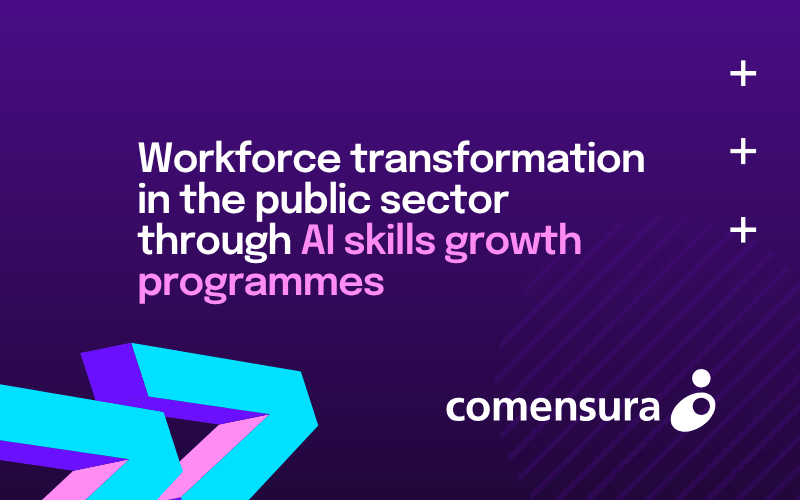

Author
2022-09-12
5 minutes
Time-to-hire: why speed is king in today’s tough talent competition
Time-to-hire has long been a standard metric that recruitment success is measured in, however, in today’s tough talent market, speed has never been more crucial.
In this candidate-led environment - when, according to official figures, there are now around 1.3 million vacancies sitting open across the UK economy – jobseekers are spoilt for choice. In my experience, it’s quite usual for great applicants to have four of five offers on the table at any one time – and the reality is that often the hirer that acts decisively will win out when it comes to talent.
It’s crucial then that hiring managers have processes and suppliers in place that let them to move at lightning speed - especially when they’re competing for niche and in-demand skills.
The now generation
Skills shortages aside, today’s professionals, particularly those from the younger generations in the workplace, expect instant gratification. Generation Z is accustomed to getting instant information and results at any time – and jobhunting is no exception.
We can now connect with friends across the world, shop and pay for goods, and watch any film or listen to any song instantly via our phones. Jobseekers, unsurprisingly, expect a consumer-grade experience akin to those they’ve become used to through apps and retail websites. Retailers have long recognised that if the buying process is not first rate, then customers will abandon their basket.
We’re more impatient than ever before. More than half of all webpages viewed receive under 15 seconds of attention, according to Chartbeat, while 40% of audiences abandon a website if it takes three seconds to load.
It’s no surprise, then, that the majority of jobseekers (71%) abandon job applications if they take longer than 15 minutes to complete.
The value of a streamlined recruitment journey
Beyond the application process itself, recruitment journeys are often cumbersome, clunky and slow. This perhaps explains why 60% of hiring professionals say that they regularly lose candidates before they’re able to schedule an interview. Data from Glassdoor, meanwhile, suggests that most companies have an 80% candidate drop-off rate during their entire application process.
There’s an historic misconception that a ‘rushed’ recruitment process will result in poor quality candidates. However, today, this couldn’t be further from the truth: applicants expect a level of efficiency in their professional lives that they have come to enjoy and expect in their personal lives. Hirers who insist on an extended period to consider their options, hold a committee meeting to consider a longlist, or wait to see if what they think to be the absolutely perfect candidate applies before making a hiring decision, will inevitably lose their top pick to the competition.
These hirers must trust the quality of the supply chain if they’re to feel secure that the candidates who they’re presented with in the first instance are the best match. We also sometimes see hirers who add unnecessary extras to a job spec, essentially creating a wish-list for an unobtainable candidate. Strip it back to basics and identify what you really need from an individual – and if this is achievable for the salary on offer. Your recruitment partner is well placed to offer market insights around the available candidate pool.
By setting realistic expectations you can be more focussed and efficient in your search. It’s all too easy to switch on to autopilot: draft a job description and send it out. But that way of working is not fit for purpose in the current market. The reality is that there are high levels of demand and finite levels of supply.
By spending time at the earliest stages of the recruitment process reviewing the job specification, you lay the foundations for a swift hire. Have conversations with your staffing partners before you even go out to recruit. They’ve the advantage of specialist tools and personal insights that will pay dividends. For example, they will be able to advise if there are too few candidates in the market, where they are based, and if you perhaps need to recruit for remote roles because of limited supply of resources.
Comensura works closely with its suppliers to ensure that their all-important insights on market conditions are offered to hirers to help them get the right talent. For example, highlighting candidate availability, competitor activity or candidate expectations.
Building a strong employee value proposition
You want your recruitment processes to reflect the nature and values of your company: if it’s overly complex or rigid, it gives a negative impression.
An onerous recruitment or onboarding process sends a message that your business is culturally bureaucratic, overly process-driven, and not a fun and dynamic organisation to work for. We cannot forget that a candidate’s recruitment journey is an ideal vehicle to promote your brand and employee value proposition (EVP) get it wrong, and you risk losing applicants to firms which offer a more straightforward, light-touch, engaging or even gamified recruitment journey.
Plan in advance, do your research and really think about what you need. Be decisive in your decision-making process. And once you have found what you need, get that person locked in. This approach makes for a better candidate experience all around, particularly when you consider that fewer applicants in the mix means you have bandwidth to give feedback to unsuccessful jobseekers.
Make no mistake, looking for a job can be horrible: it can take ages, and if you are not kept in the loop, it can be even worse. Automated ATSs, with no human input, can make for a negative experience. Use technology to facilitate a people-based experience, on the other hand, and you can actively boost your employer value proposition.
Building and maintaining a great employer brand is especially important for those businesses which regularly rely on contingent talent. Here the need for a positive user-experience from candidate perspective is even more crucial: if you keep a great contractor waiting you are likely to lose them not only for your current assignment, but also in the future.
By offering a frictionless recruitment process, businesses also maximise their chances of engaging passive candidates who may be open to moving to a new employer, but who are not yet purposefully seeking to take the next step on their career path. For example, they may absent-mindedly click on a job ad out of curiosity, but the option to apply with just a couple of clicks propels them into your candidate pool.
Speeding up time-to-hire in today’s tough talent market
Accelerating time-to-hire is relatively easy to achieve. Here are our 5 top tips for boosting time-to-hire in a tough talent market:
1. Streamline recruitment and onboarding processes – see what steps can be removed or improved
2. Focus on user experience – put yourselves in the candidate’s shoes to get a true representation of the process
3. Set realistic expectations and lean on the market intelligence of your recruitment partners
4. Set deadlines. When do you want to see CVs? When will you interview? When will you make a decision?
5. Act decisively – don’t hang around once you’ve identified a great candidate.
An expert partner can help hiring managers to get a grip of their processes, access a group of curated specialist suppliers, identify the best route to market and be a critical friend to help you find a smarter way to work to speed up your staffing strategies. While every situation is different, for an example a financial services company we partner with reduced its time to hire from 25 days to 15 days by following the above guidance.
Building emotional connections
At a time when hiring is increasingly transactional and automated, quickly and personally articulating that a candidate is of interest, may seal the deal. Building emotional and human connections can make a real difference, particularly if you’re first off the starting block.
This is particularly important for firms who are not offering the most competitive salaries or perks.Today’s recruitment is machine-led: everyone relies on tech. But there’re points of differentiation. Brands compete on price, but aside from that, if you can deliver the ‘people part’ then that can make a huge difference.
We’re operating in a competitive market and speed is of the essence. Jobseekers are the consumer and great candidates have more options than ever before. Hiring managers who are slow off the mark are unlikely to bag the best people. Practicing swift and effective time-to-hire processes are a unique selling point for your EVP and will help your business secure top talent amid today’s challenging recruitment landscape. Plan and prepare correctly and trust in the process to present the best people quickly.
Insights to drive workforce performance
Workforce insights in your inbox
Sign up for our newsletter with the latest workforce management news, insights, analysis and more.
United Kingdom
First Floor, Mulberry House
Parkland Square
750 Capability Green
Luton, LU1 3LU
Australia
Suite 1403
Level 14, 309 Kent Street
Sydney
NSW 2000









